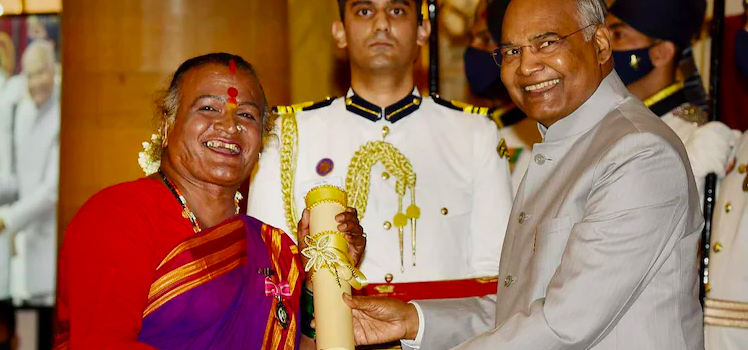The rising role of Women Entrepreneurs’ in Indian Economy
Today we see women from all walks of life who are successfully taking on leadership roles in the positions that were traditionally considered an exclusively male domain. The feminist wave that began a century ago has created a roaring tide of women empowerment in the 21st century. The presence of these women is needed and seen increasingly in every field of economic, social and political activity. Whether it’s Kiran Mazumdar Shaw- an Indian billionaire and executive chairperson and founder of Biocon limited or, Radhika Baburao Shinde from a remote district in rural India, who struggled to break down barriers to starting a business, these women have come a long way in breaking out of the shackles of patriarchy.
Women are playing a major role in India’s economy and this can be reflected by the following stats. The 6th Economic Census by the Ministry of Statistics and Programme Implementation reveals that there are 14 percent women entrepreneurs in India. About 13.5-15.7 million women-owned businesses provide direct employment to 22-27 million people.

The stories of Padma Shri recipients like transgender Manjamma Jogati, Bhuri Bai, Sindhutai Sapkal, Lakhimi Baruah and Jaswantiben Popet explains the grit and determination of women entrepreneurs in India. Moreover, McKinsey estimates that India holds the potential to add 700 USD billion to global GDP by increasing the participation of women.
In a national study conducted by EdelGive Foundation that focuses on the challenges, impact on health, socio-economic security and family wellbeing; it was revealed that around 80 percent of women in semi urban and rural India felt a significant improvement in their cultural and socio-economic status on the beginning of an enterprise. These women also reported a greater sense of independence and confidence. In addition, it is estimated that women-led business will grow to 90 percent in the next five years. So, what is favouring more women to start business on their own?
Three factors key to this phenomenon include – awareness, ambition and admiration. For instance, women have been game changers in the field of science and technology. India ranks among top worldwide for producing as many as 40 percent female graduates in STEM. An increase of 8.8 percent in literacy rate was also observed amongst women in FY21 highlighting bright prospects for women and the country.
The second one is ambition to bring a positive change. Women-led startups are able to provide 10 percent higher revenue consistently over a period of five years as per BCG. Ambition also stems from unmet needs as we can see in the story of Radhika Shinde whose primary goal was to provide a better life for her three children.
The last one is admiration to own a business as characterised by a sense of esteem, regard and renown. In a survey by Bain & Company, it was revealed that 45 percent of women in rural India were driven to start business for gaining recognition.
In the rural sector, a trend of ‘feminisation’ of the agriculture sector has been observed as women move to adopting multiple roles of cultivators, entrepreneurs and laborers while the men migrate to the cities in search of steady income. The government has earmarked at least 30 percent of the budget allocation to ensure main-streaming of women in the agriculture sector.
There is also a focus on women self-help groups (SHG) in order to connect them to micro-credit through capacity building activities. One successful story of joining SHG is of Lakshmi Amol Shinde from Wardha who initially sold food delicacies in her village only but later went on to expand her business and catering to shops in Nagpur. Another incident is of Babli Devi, a tribal woman from Udaipur, Rajasthan who went from collecting and selling custard apples at Rs 2 to now working in a custard apple pulp extraction unit and earning close to Rs 10,000 a month. These two incidents exemplify how Indian women can leverage the strength of their community institutions to flip their dire situations and secure a better future for themselves and their families. In addition to this, it was because of SGH that women of rural India in over 27 states supplied 19 million masks, 100,000 litres worth of sanitizers, 50,000 litres of hand wash, and ran more than 10,000 community kitchens.

Globally, developing competencies in women and ensuring equal access in all fields of education will result in widening their talents and perspectives. Universities therefore have a major role in making this happen. In an Economist survey, it was found that while universities are still one of the most important engines of the “knowledge economy, competition is obliging them to rethink their missions, find new ways to mobilize resources, and forge new partnerships.” These are the same issues and challenges that the UN is currently working on.
UN women is also developing a research and action-based agenda on their five priorities listed as follows- i) leadership and participation of women, ii) bringing an end to violence against girls and women, iii) engagement of women in peace building process, iv) enhancing their economic empowerment, and lastly v) making of gender equality goals.
Women have overcome a lot of barriers to get to where they are. They may have had to fight their families, struggle to access the right resources, markets, training, mentors and may not have had adequate financial knowledge. Despite these challenges, there has been a remarkable shift in the way women are contributing to the growth of the nation. As women owned businesses are expected to create 150 – 170 million jobs by 2030, India’s future looks more brighter than ever.

